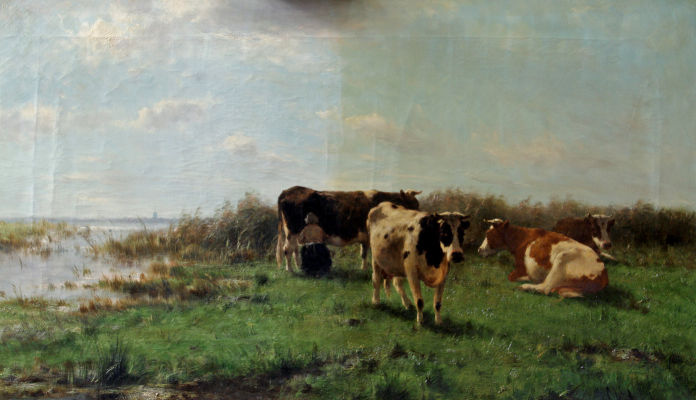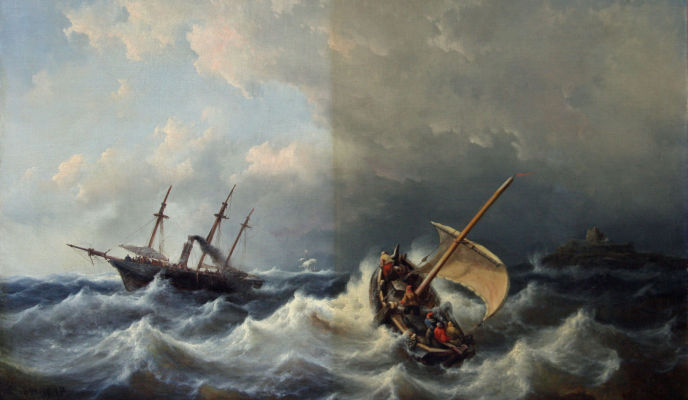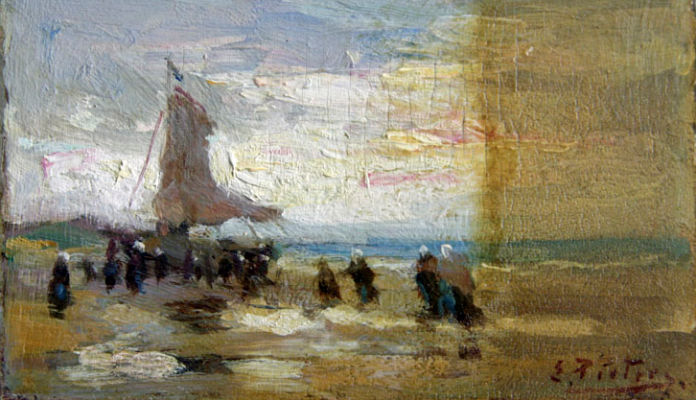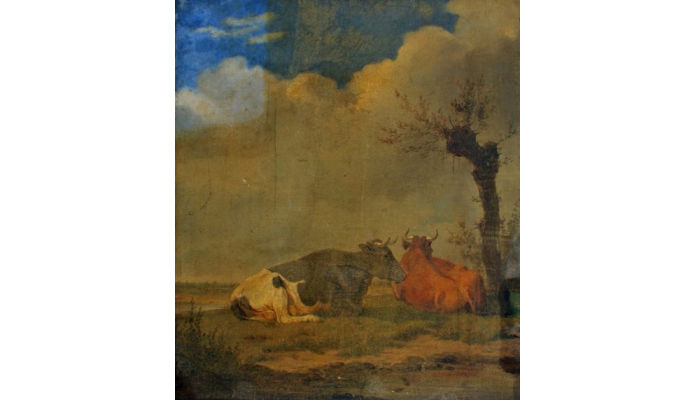Cleaning paintings
There are 2 different items that are often called “cleaning”.
1) You sometimes have a dirt layer, which is due to the fact that the painting has hung in a smoky room for many years (nicotine attack) or in a house with coal stoves (red scale). Sometimes it is also a combination of dirt, flypoints, soot and nicotine.
This type of dirt, i call restorer Surface contamination and cleaning costs are depending on the size of the painting and the paint coat (thick painted or flat, a varnished or unvarnished painting, the state of the linen etc.).
This must always be looked at our studio for a correct price, but a global price for medium size painting is: € 375, – to € 520, -.






